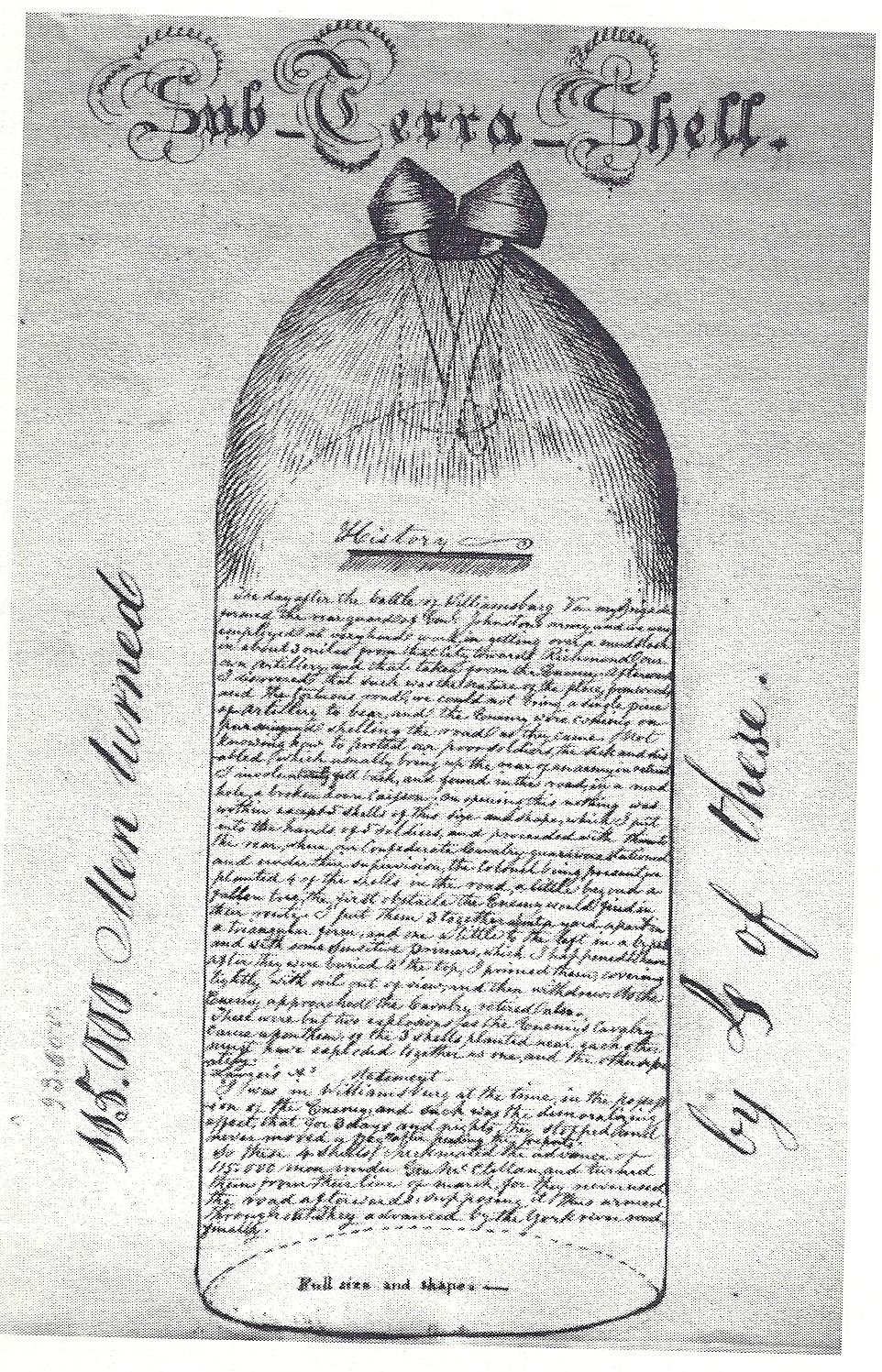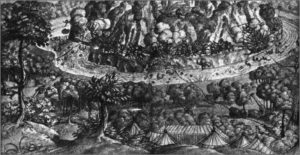Following the post below about micro IEDs in Siemens equipment I’m going to go off on a wild tangent here. Hold on.
I’m reminded by the mention of Siemens about much earlier IEDs associated with the Siemens founder, Werner von Siemens in the 1840s. For context, in the US Samuel Colt developed a number of sea mines, and in Russia, Alfred Nobel’s father Emmanuel Nobel worked for the Russians developing a contact fuze for sea mines used in the Crimean war against British naval vessels in the Baltic. (A similar contact fuze, named the Jacobi fuze, but actually designed by Nobel was also used in improvised land mines in the Crimea).
Werner von Siemens was a German electrical engineer and inventor who developed electrically initiated command detonated water borne IEDs which protected the waters off Kiel and prevented Danish naval bombardment of the city during the Schleswig-Holstein war in 1848. I’m amused that Siemens was placed under “honorary arrest” for being a second in a duel, and used his time in gaol to conduct chemistry experiments.
Siemens’s sister lived in Kiel where her husband was a chemistry professor. They lived close to the harbour in Kiel and were potentially vulnerable to Danish attack. As Siemens says in his autobiography:
This led me to the then entirely novel idea of defending the harbour by submarine mines fired by electricity. My wires insulated with gutta-percha offered a means of exploding such mines at the right moment in safety from the shore. I communicated this plan to my brother-in-law, who took it up warmly and immediately submitted it to the provisional government for the defence of the country. The latter approved of it and despatched a special emissary to the Prussian Government, with the request to grant me permission to execute the plan. My authorized employment or even mere leave of absence for this warlike purpose was however opposed on the ground that peace still reigned between Prussia and Denmark. But it was intimated to me that I should receive the desired permission if circumstances changed, as was expected.
I employed this waiting time in making preparations. Large and particularly strong canvas – bags rendered watertight by caoutchouc (rubber) were got ready, each capable of holding about five hundred- weight of powder. Further, wires insulated in all haste and exploding contrivances were prepared, and the necessary galvanic batteries procured for firing. When the departmental chief in the war-office. General von Reyher, in whose ante-room I daily waited for the decision, at last made the communication, that he had just been appointed minister and war having been resolved against Denmark, that he granted me the desired furlough as the first act of hostilities against Denmark, my preparations were almost completed, and on the same evening I left for Kiel.
My brother-in-law in Kiel had meanwhile made all the preparations in order to proceed quickly with the laying of the mines, as the appearance of the Danish fleet was daily expected. A ship-load of powder had already arrived from Rendsburg, and a number of large casks stood ready well calked and pitched, in order to be provisionally used instead of the still unfinished caoutchouc-bags. These casks were as quickly as possible filled with powder, provided with fuses, and anchored in the rather narrow channel in front of the bathing establishment in such a way that they were buoyed twenty feet under the surface of the water. The firing-wires were carried to two covered points on the shore, and the course of the current so disposed that a mine must explode if at both points simultaneously contact was made. At both places of observation upright rods were set up and the instruction given, that contact must be made, if a hostile ship took up a position in the direct line of the rods, and remain made until the ship had again completely removed from the right line. If contact of both right lines were at any moment simultaneously made the ship would be exactly over the mines. By experiments with small mines and boats it was ascertained that this exploding arrangement acted with perfect certainty.
Later in the war the casks were replaced with “caoutchouc” india rubber bags and Siemens used the casks as command initiated land based IEDs to protect the fortifications around Kiel. One of these detonated prematurely, as follows:
The rest of the men I had collected in the fortress-yard to distribute them and exhort them to bravery, when suddenly before the fort-gate rose a vast fire -sheaf. I felt a violent compression succeeded by a violent expansion of the chest: the first sensation was accompanied by the clatter of broken window-panes, and the second by the elevation of the tiles of all the roofs to the height of a foot and their subsequent fall with a dreadful din. Of course it could only be the mine, whose explosion had produced the mischief. I thought at once of my poor brother Fritz. I ran to the gate to look after him, but before I reached it he met me uninjured.
He had prepared the mine, set up the battery on the terre-plein, connected the one igniting wire with the one pole of the battery and fastened the other to the branch of a tree to have it ready to hand, and was about to announce this when the explosion occurred, and the atmospheric pressure hurled him down from the rampart into the interior of the fort. The rather violent wind had shaken the second firing-wire from the tree, causing it to fall just on the other pole of the battery and so producing the explosion.
Incidentally the same technique for sighting of targets was subsequently used in the US Civil war.
As an aside the scientific genes ran strong in the Siemens family. Werner’s younger brother was a remarkable engineer who emigrated to England, adopted British citizenship and became knighted as Sir William Siemens for his contributions to science. Another brother, Carl, an entrepreneur, worked in Russia developing the Russian telegraph system. He was ennobled for this by Tsar Nichlas II.
So a number of industrial dynasties, (Colt, Nobel and Siemens) all had beginnings based on the development of IEDs….
Update on Wednesday, September 26, 2012 at 1:50PM by Roger Davies
Just to clarify in terms of the relative dates of inventions:
Samuel Colt demonstrated a working electrically initiated water borne mine in 1841.
Werner Siemens’s Kiel devices seem to have been independently invented in 1848.
Immanuel Nobel seems to have taken Siemens’s idea and created contact fuzing in 1853.
…or thereabouts….
Colt’s IED’s were not brought into service in the US because it was objected to by then Congressman John Quincy Adams who scuttled the project as “not fair and honest warfare” and called the Colt mine an “unchristian contraption” But such mines were later used extensively in the Civil war.
Update on Friday, September 28, 2012 at 6:15PM by Roger Davies
Ok, there’s another man in the mix for earliest electrically initiated sea mines. Engineer in Chief Schilder of the Russian Navy in the 1830s.
Update on Friday, November 2, 2012 at 10:52PM by Roger Davies
And another even earlier Baron von Schilling was making electrically initiated command sea mines and land mines for the Russians in 1812.



